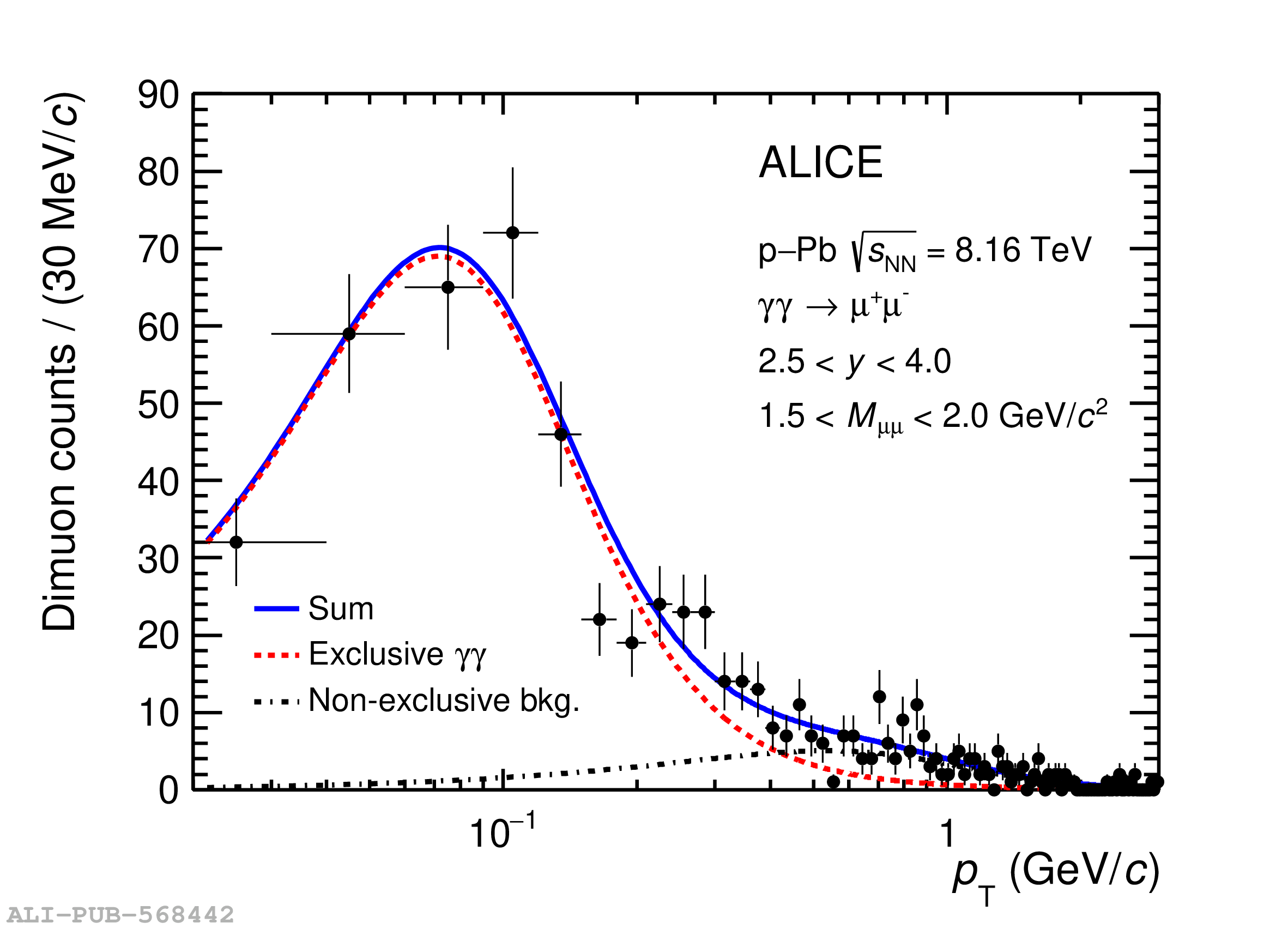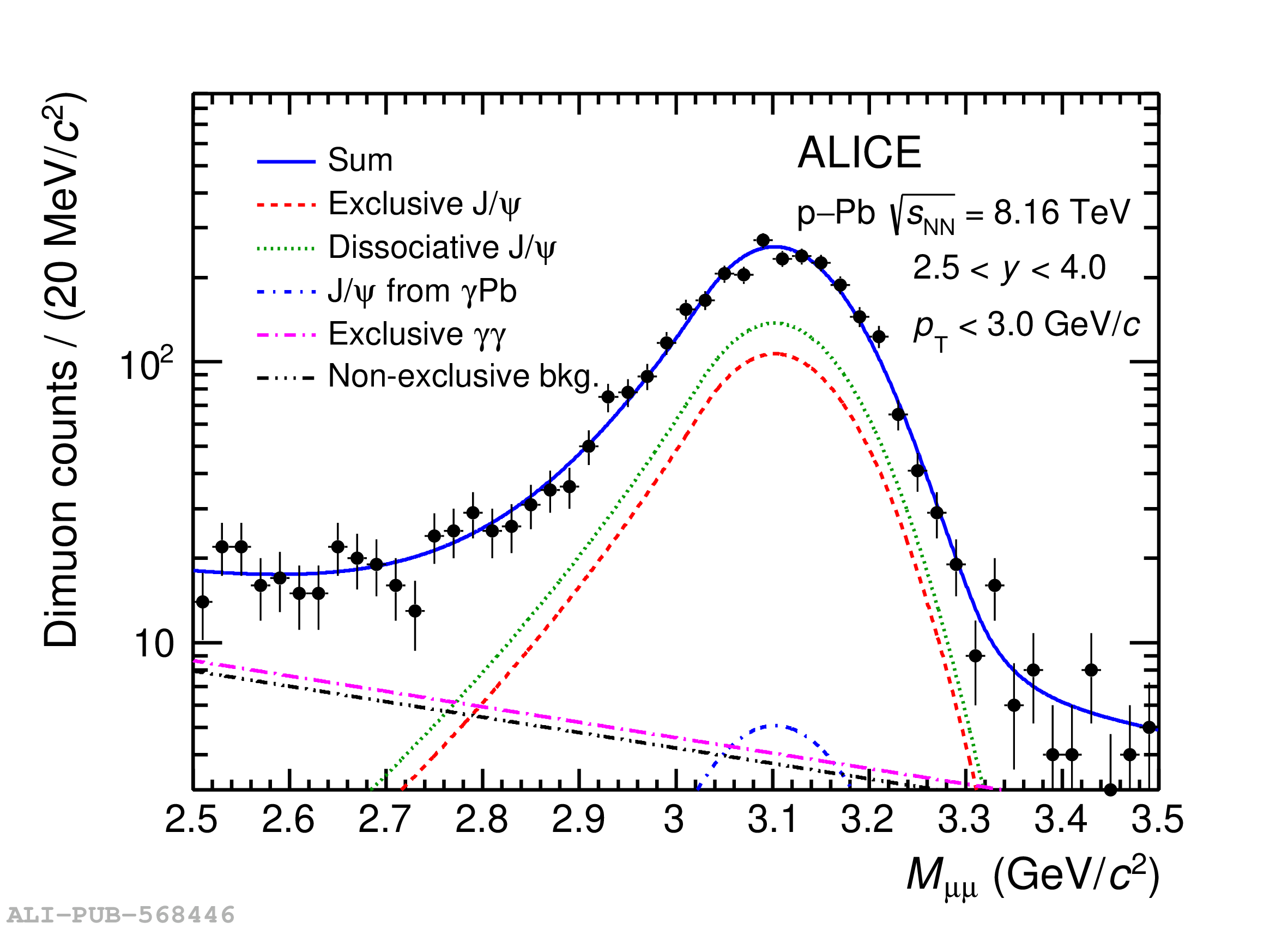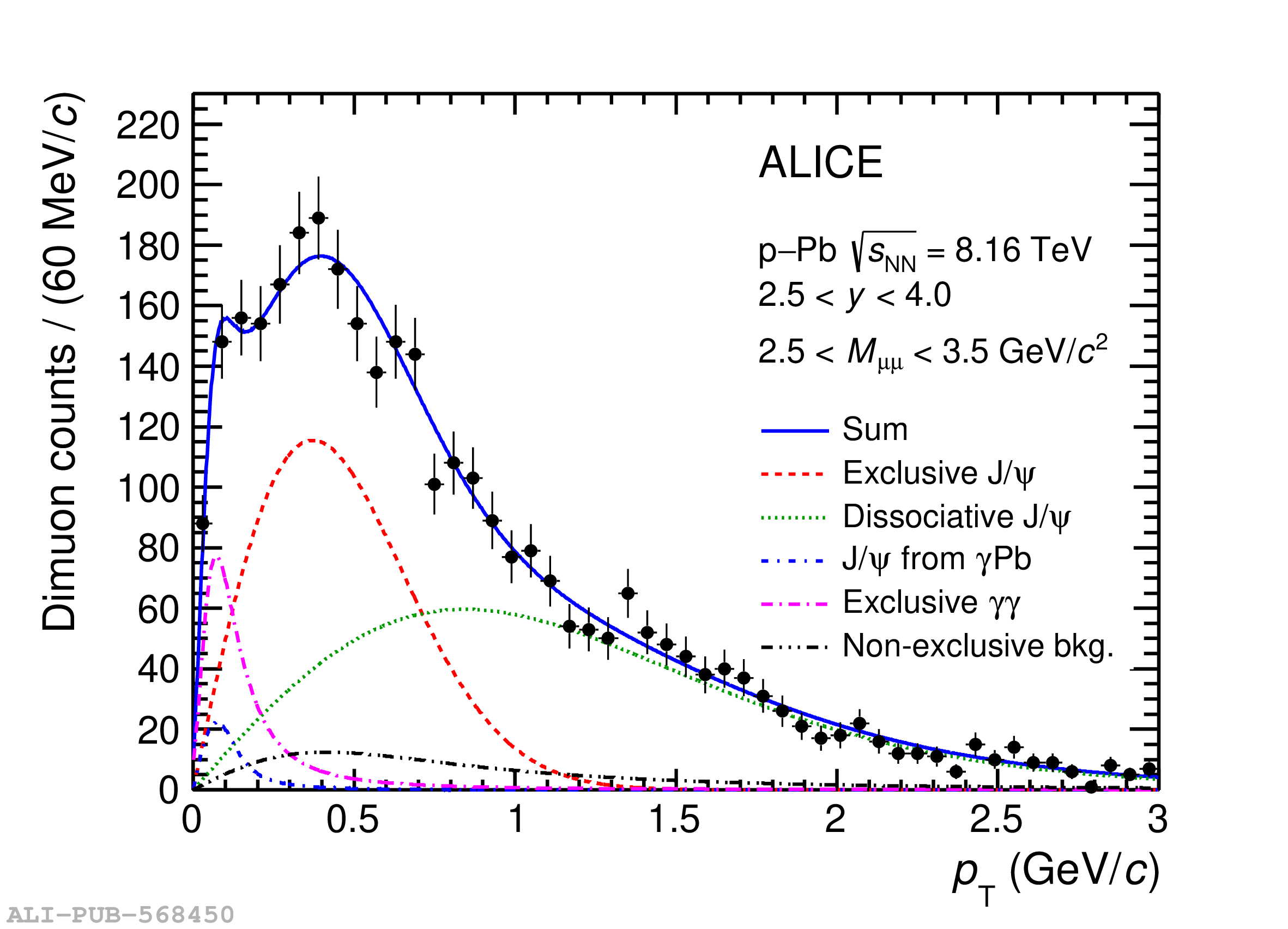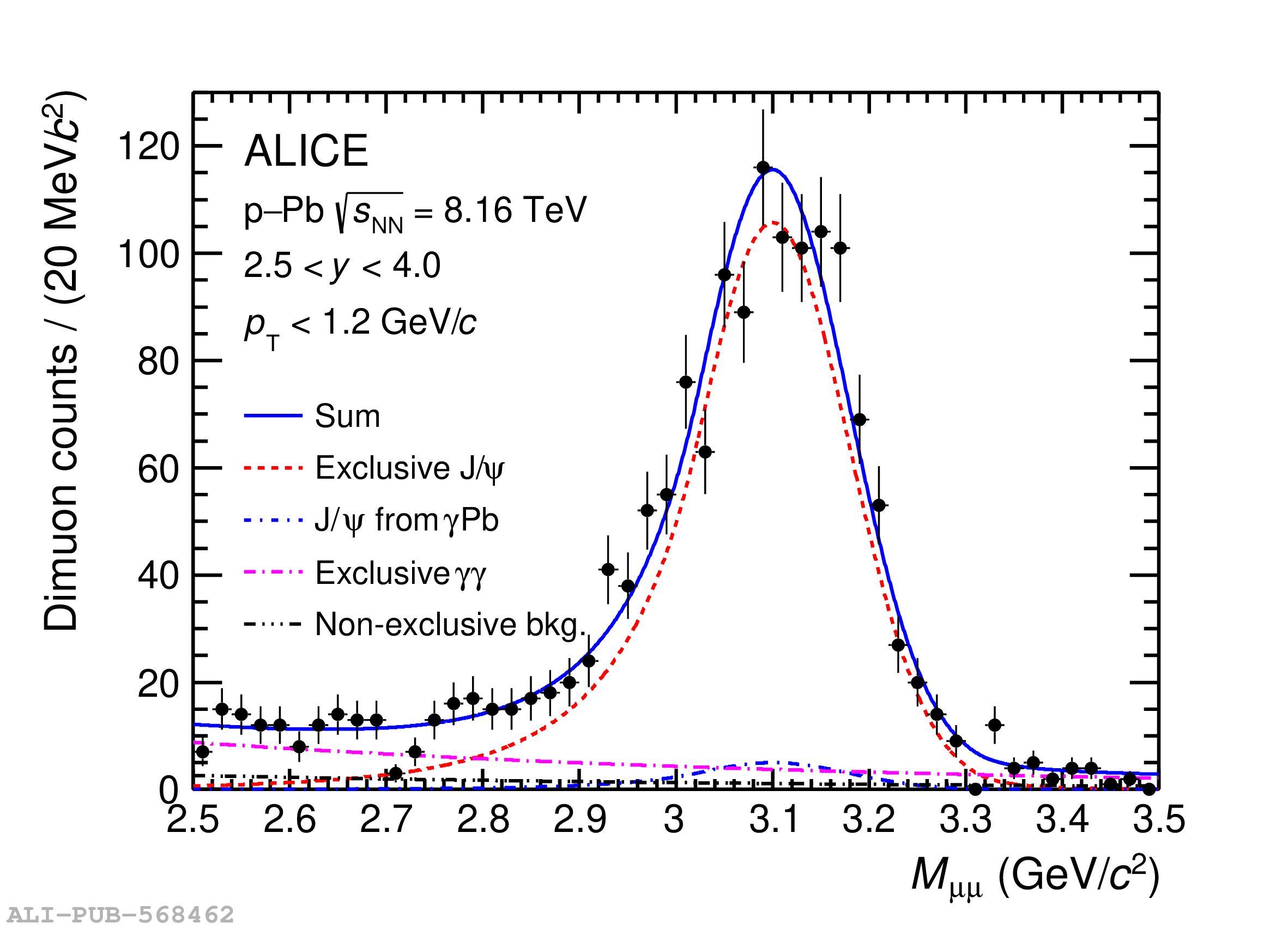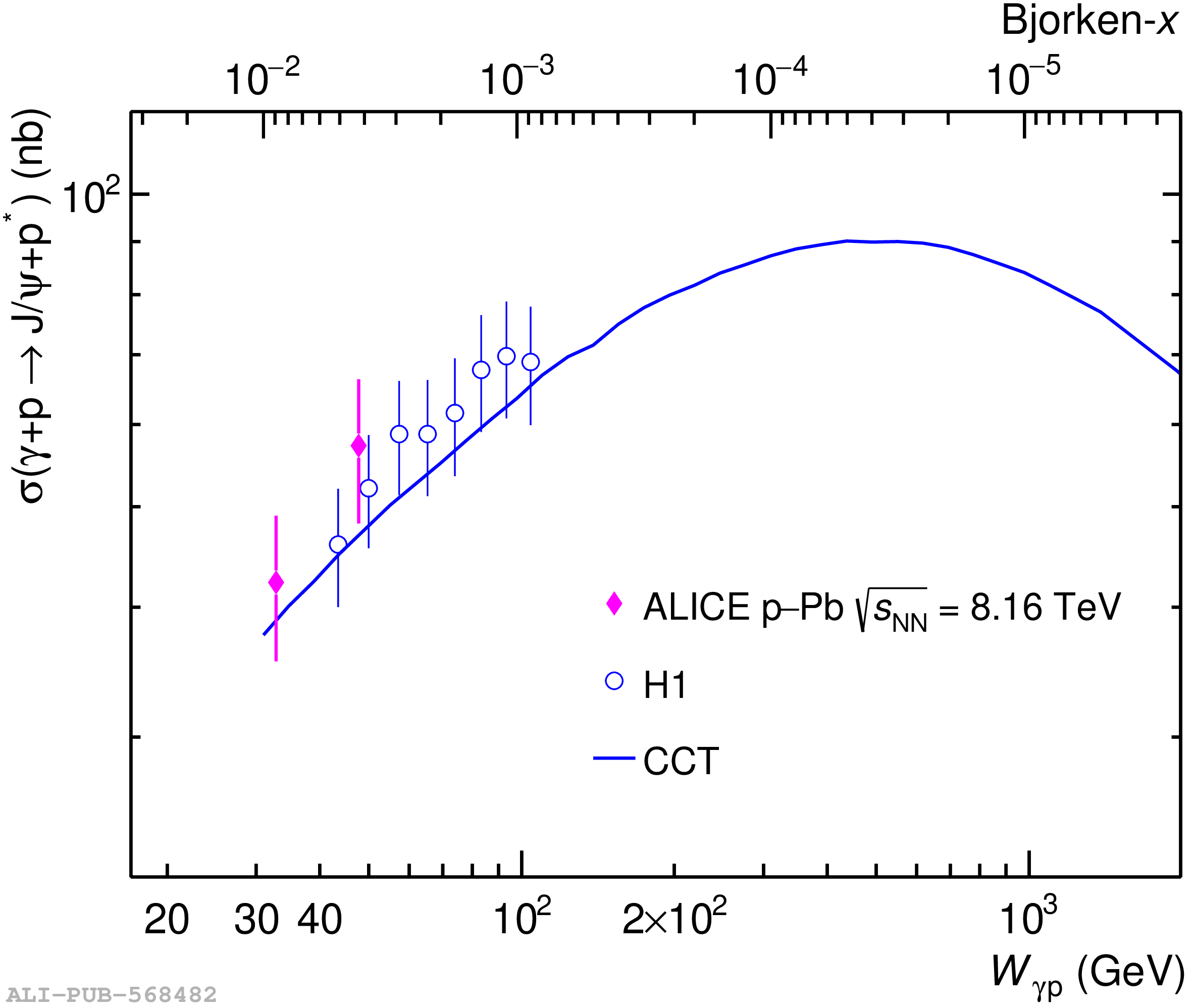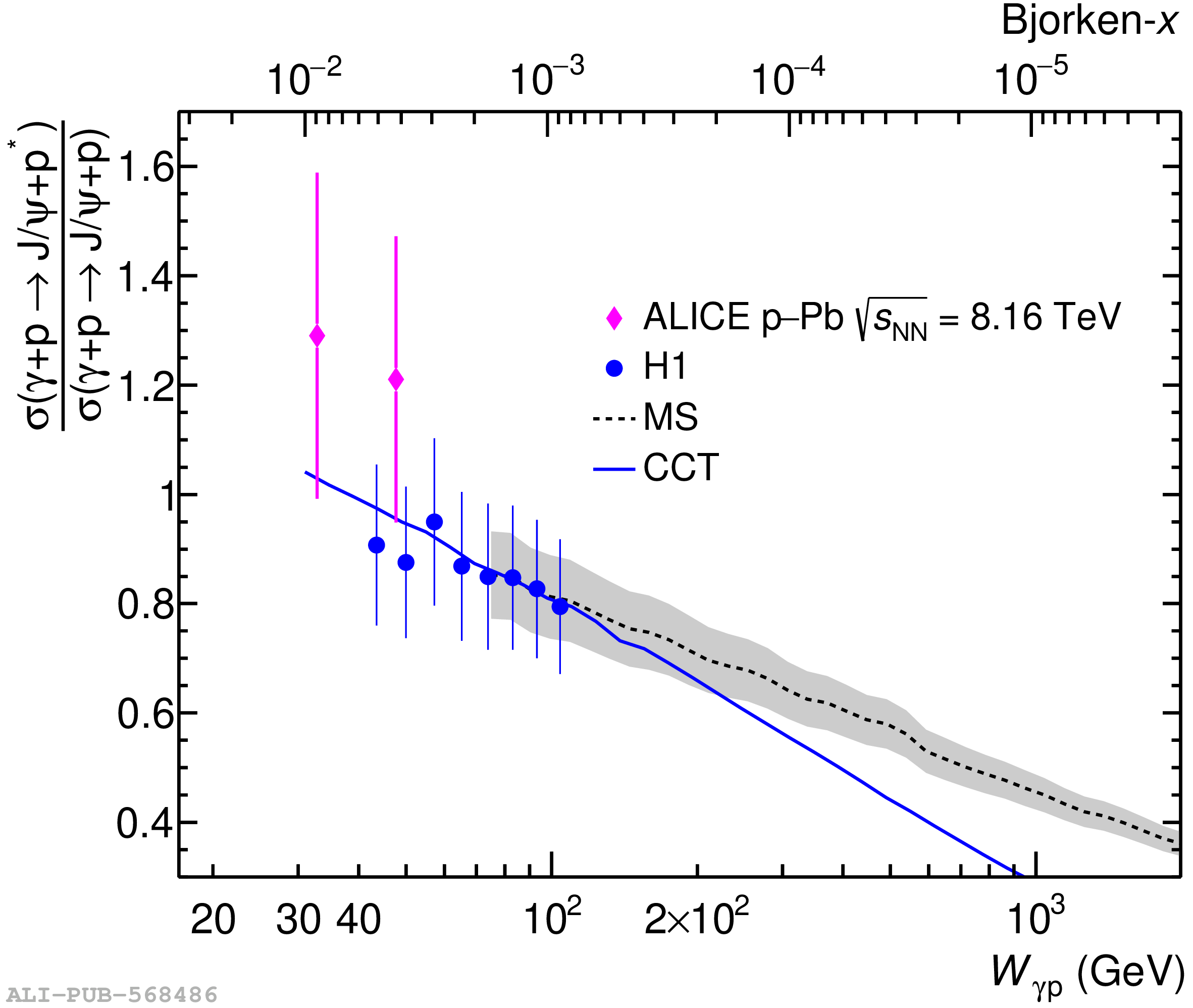The ALICE Collaboration reports three measurements in ultra-peripheral proton$-$lead collisions at forward rapidity. The exclusive two-photon process \ggmm and the exclusive photoproduction of J/$\psi$ are studied. J/$\psi$ photoproduction with proton dissociation is measured for the first time at a hadron collider. The cross section for the two-photon process of dimuons in the invariant mass range from 1 to 2.5 GeV/$c^2$ agrees with leading order quantum electrodynamics calculations. The exclusive and dissociative cross sections for J/$\psi$ photoproductions are measured for photon$-$proton centre-of-mass energies from 27 to 57 GeV. They are in good agreement with HERA results.
Phys. Rev. D 108, 112004 (2023)
HEP Data
e-Print: arXiv:2304.12403 | PDF | inSPIRE
CERN-EP-2023-059
Figure group

